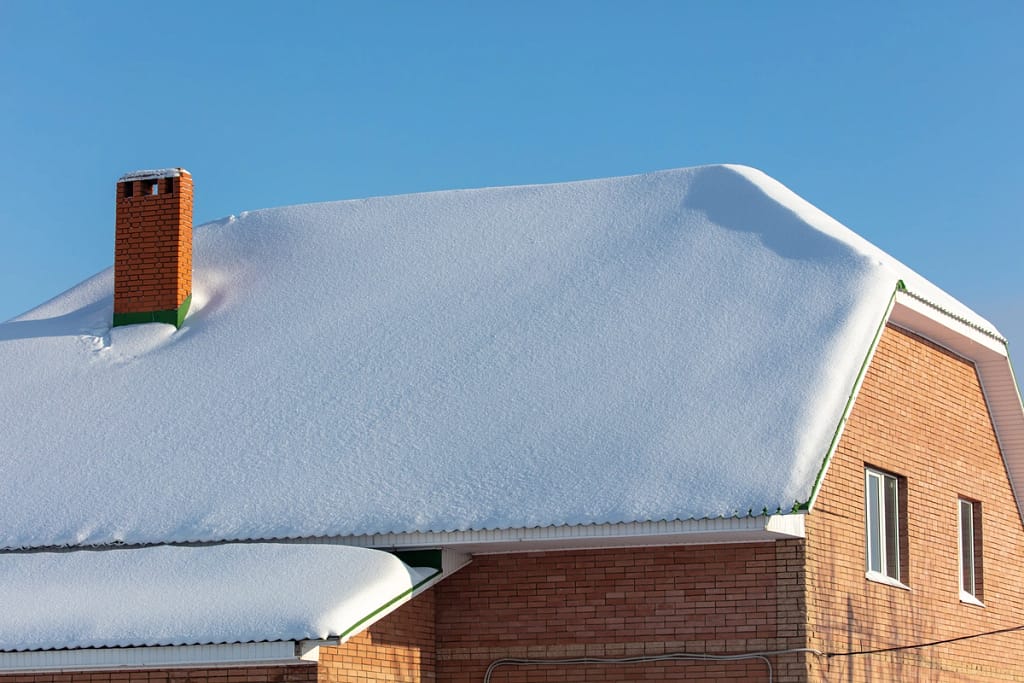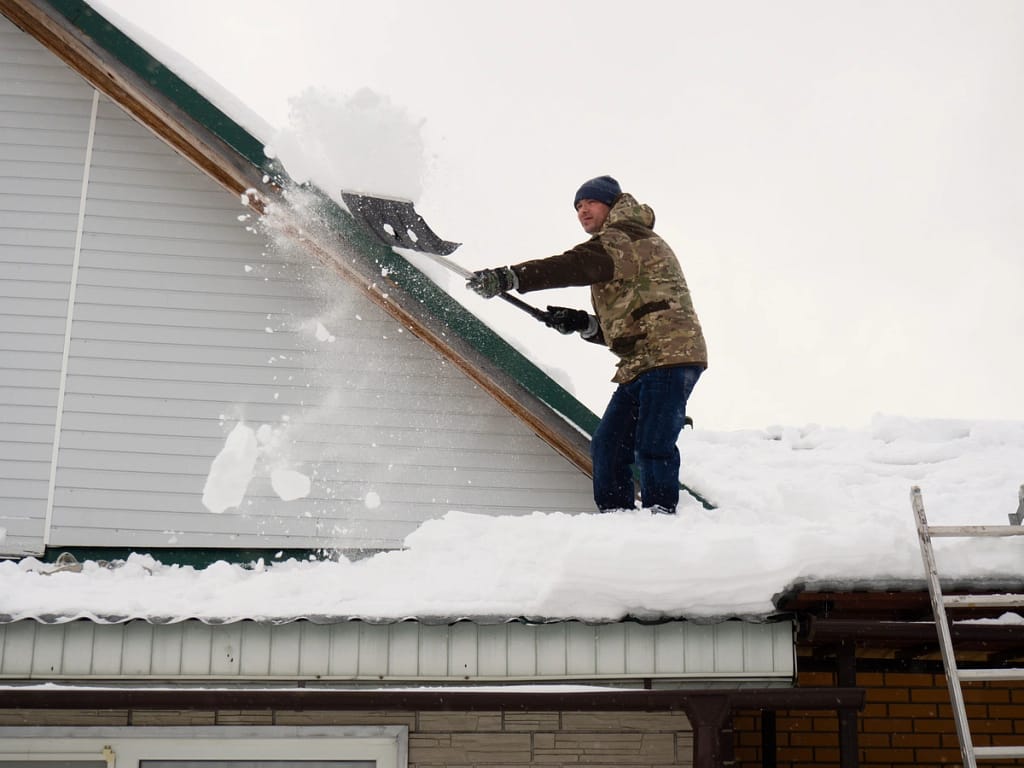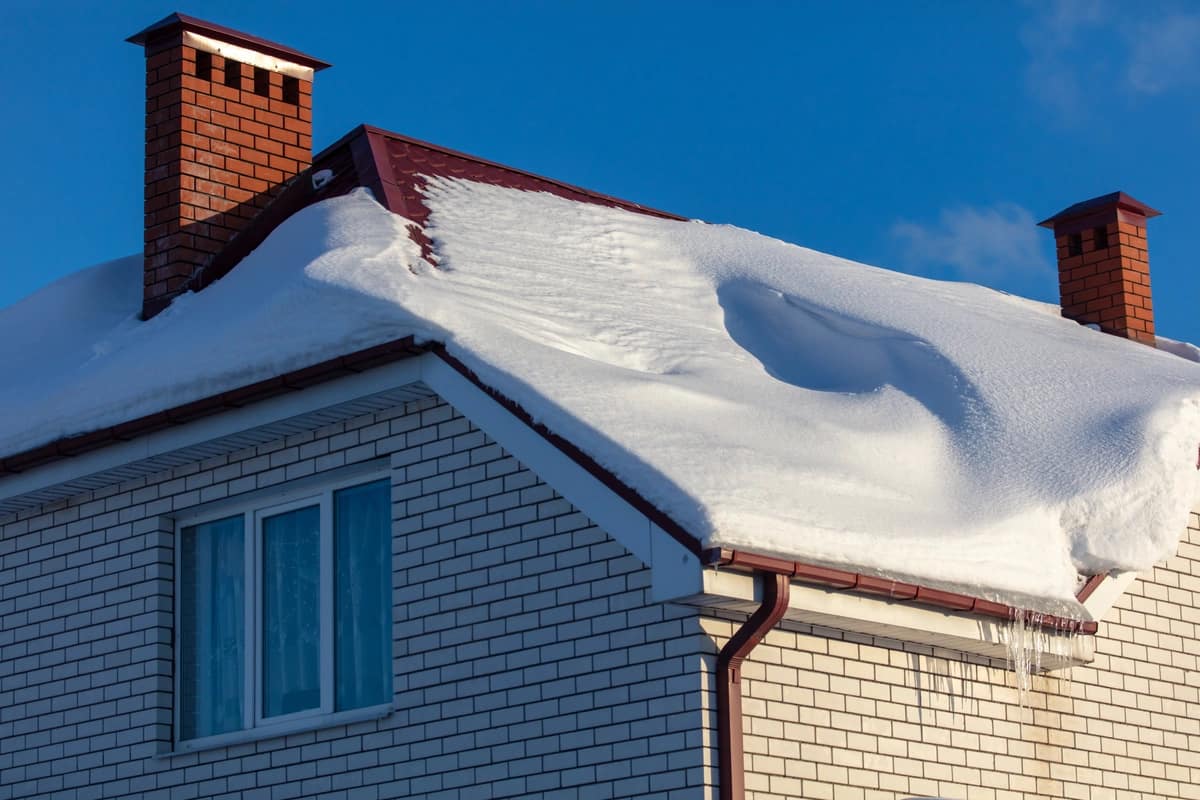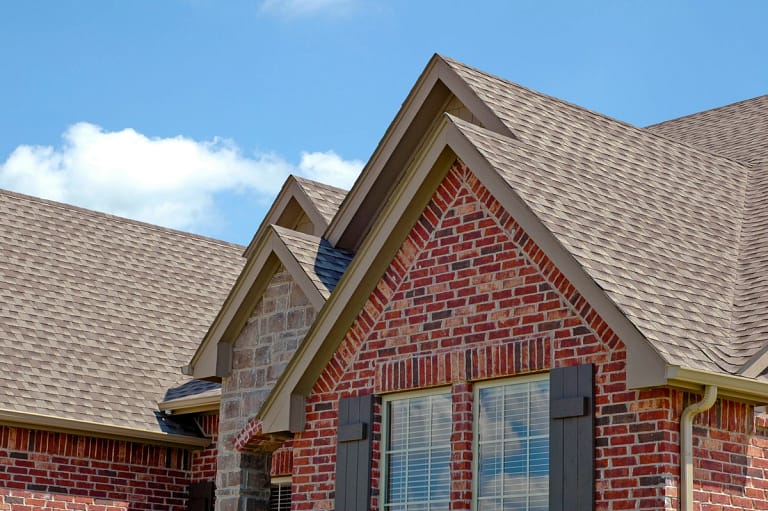As winter blankets our landscapes in a serene white, the accumulation of snow on our roofs becomes a concern. While snow adds to the picturesque charm of the season, it also poses a potential risk to the structural integrity of our homes.
Understanding snow load is crucial for homeowners to ensure the safety and longevity of their roofs. In this guide to all things snow related, we delve into the intricacies of snow load, exploring:
- Its weight
- Potential dangers
- Capacity roofs can bear
- Proper removal techniques
- Essential winter preparations for your roof
How much snow can a roof hold? Keep reading to find out!
Understanding Snow Weight

Snow, seemingly light and fluffy, can pack a surprising weight. The weight of snow varies depending on its density.
- Freshly Fallen Snow: approximately 5 to 20 pounds per cubic foot. However, as snow accumulates and compacts over time, its density increases, leading to heavier loads.
- Wet, Dense Snow: 30 to 40 pounds per cubic foot, while
- Ice: Ice can be even heavier, with a density of up to 57 pounds per cubic foot.
It’s essential to recognize that even seemingly small amounts of snow can exert significant pressure on a roof’s structure, especially when compounded by freezing and thawing cycles.
Dangers of Snow Accumulation on Roofs
The accumulation of snow on roofs presents several dangers, both immediate and long-term. One immediate concern is the risk of roof collapse under excessive snow load. Additionally, snow can create ice dams, which block proper drainage and lead to water infiltration into the roof and attic space. This moisture intrusion can result in water damage, mold growth, and compromised insulation, leading to energy inefficiency and costly repairs. Furthermore, the weight of snow can cause structural damage to the roof, including sagging, cracking, or even failure of roof components.
How Much Snow Can a Roof Hold?
Determining the maximum snow load a roof can bear requires consideration of various factors, including the roof’s design, materials, pitch, and geographical location. Building codes and engineering standards provide guidelines for calculating snow loads based on these factors.
For example, roofs in regions prone to heavy snowfall are typically designed to withstand higher snow loads than those in areas with milder winters. A professional structural engineer can assess your roof’s capacity and recommend appropriate measures to mitigate risks.
Proper Snow Removal Techniques

When snow accumulates on your roof, timely removal is essential to prevent excessive load and potential damage. However, improper snow removal techniques can also cause harm to your roof. Here are some guidelines for safe and effective snow removal:
- Use a snow rake or shovel specifically designed for roof snow removal to avoid damaging shingles or other roofing materials.
- Start from the edge of the roof and work your way up, gently pushing the snow off rather than lifting and throwing it.
- Avoid using sharp tools or implements that could puncture or scratch the roof surface.
- Exercise caution when working on the roof, especially in icy or slippery conditions. Consider hiring a professional if the task seems daunting or unsafe.
- Never use mechanical equipment such as snow blowers or plows on the roof, as they can cause significant damage.
Reasons to Hire a Roofing Contractor
While it may be tempting to tackle snow removal from your roof on your own, there are significant advantages to enlisting the expertise of a professional roofer. Here’s why hiring a professional is often the best choice:
- Safety First: Working on a roof, particularly in winter conditions, can be hazardous. Professional roofers are trained and equipped to safely navigate rooftops, minimizing the risk of accidents or injuries.
- Prevent Damage: Improper snow removal techniques can cause damage to your roof, including cracked shingles, damaged flashing, or even structural issues. Professional roofers have the experience and knowledge to remove snow safely without causing harm to your roof.
- Preserve Warranty: Many roofing materials come with warranties that may be voided if the roof is damaged due to improper maintenance or snow removal. Hiring a professional ensures that the job is done correctly, helping to preserve your warranty coverage.
- Efficient Removal: Professional roofers have the proper tools and equipment for efficient snow removal, allowing them to clear your roof quickly and effectively. This can be particularly important during heavy snowfall when prompt removal is essential to prevent excessive snow load buildup.
- Assessment and Repairs: A professional roofer can also assess the condition of your roof during snow removal and identify any issues that may require attention, such as damaged shingles or flashing. They can then perform any necessary repairs to ensure the continued integrity of your roof.
- Peace of Mind: By hiring a professional roofer for snow removal, you can have peace of mind knowing that the job is being handled by experts who will prioritize the safety and longevity of your roof.
Preparing Your Roof for Winter: 5 Roof Maintenance Tips
Proper preparation is key to minimizing the impact of snow and ice on your roof. Here are some steps you can take to winterize your roof:
1) Inspection 🔍
Inspect your roof before winter for any signs of damage or deterioration, such as missing shingles, leaks, or weak spots.
2) Keep Gutters Clear 🧹
Clean gutters and downspouts to ensure proper drainage and prevent ice dams from forming.
3) Stop Falling Tree Branches 🌳
Trim overhanging tree branches that could pose a risk of falling onto the roof under the weight of snow or ice.
4) Proper Ventilation 👍
Ensure adequate attic ventilation to prevent the accumulation of moisture, which can contribute to ice dam formation.
5) Prevent Ice Dams 🧊
Consider installing heating cables or snow guards to help prevent snow and ice buildup on the roof.
Get Help With Winter Roof Maintenance
Snow load is a significant consideration for homeowners, especially in regions prone to heavy snowfall. Understanding the weight of snow, its dangers to your roof, and the capacity your roof can bear is essential for maintaining a safe and durable home. By following proper snow removal techniques and winterizing your roof, you can minimize the risks associated with snow accumulation and ensure the longevity of your roof for years to come. Contact Best Exteriors today to learn more about how much snow is too much snow for your roof!




